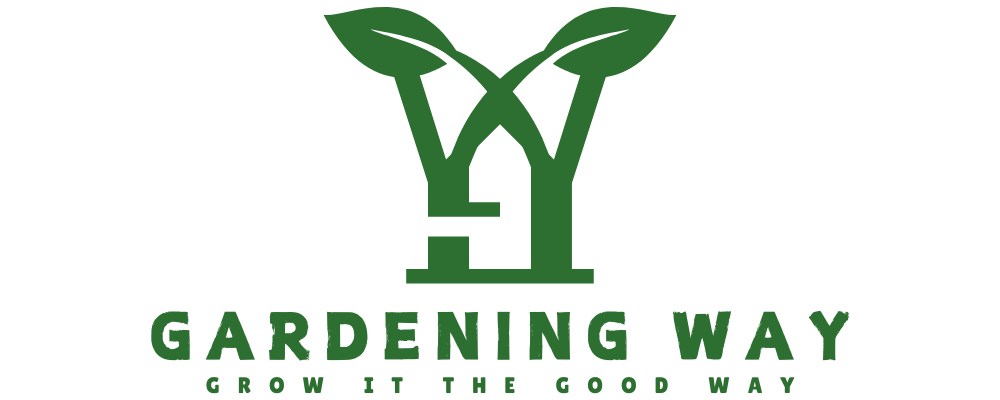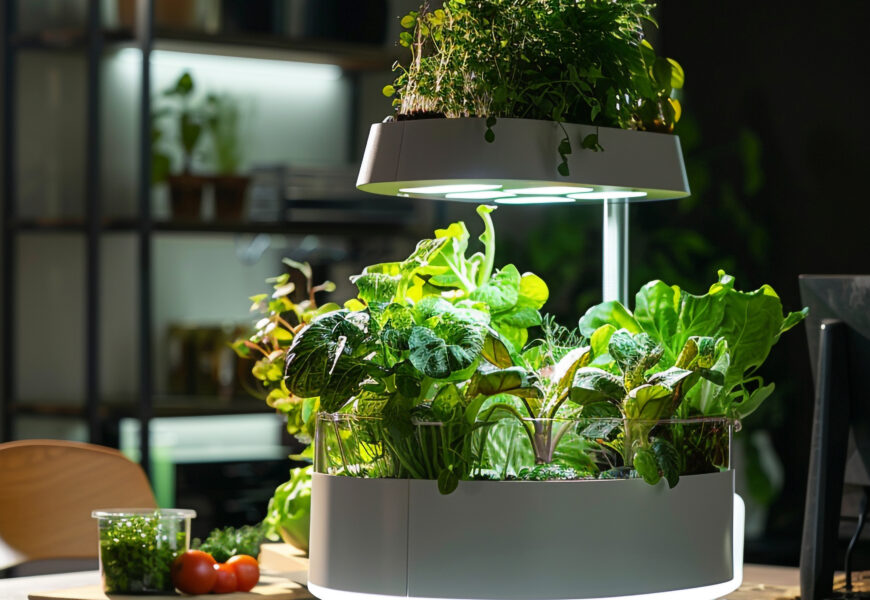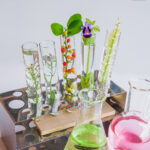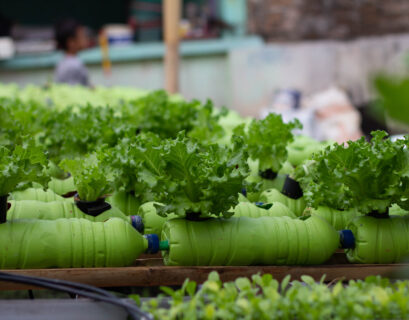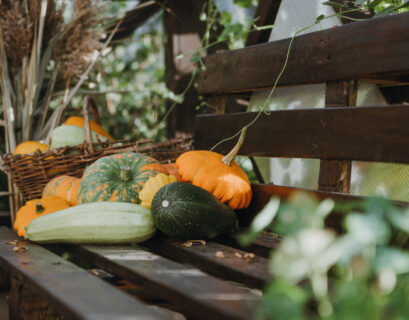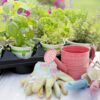Imagine having a garden full of herbs and vegetables without stepping outside or dealing with weeds. Welcome to hydroponic growing, a new way of gardening that’s changing the game. It lets you grow plants indoors, just like nature does outside. This method of indoor hydroponic gardening could be the secret to having fresh greens all year.
Hydroponics uses less water and lets you control what your plants eat, cutting out soil-borne contaminants. With new technology like LED lights and smart sensors, anyone can garden indoors. You can start small with a countertop setup or go big with a vertical garden, fitting your space and dreams.
More gardeners are finding success with hydroponics, seeing it as a sustainable gardening solution. Imagine having basil and cilantro right by your breakfast spot, without worrying about the weather. Hydroponic growing is all about creating its own cycle, starting with greenery in your home.
The Revolutionary Advantages of Hydroponic Herb and Vegetable Gardens
Switching to hydroponic vegetable gardening and growing herbs hydroponically changes how we grow plants. It’s a big leap forward in farming. This new way of gardening helps both new and experienced gardeners. It lets people grow a wide variety of plants, like basil, oregano, vegetables, and small fruits, all year.
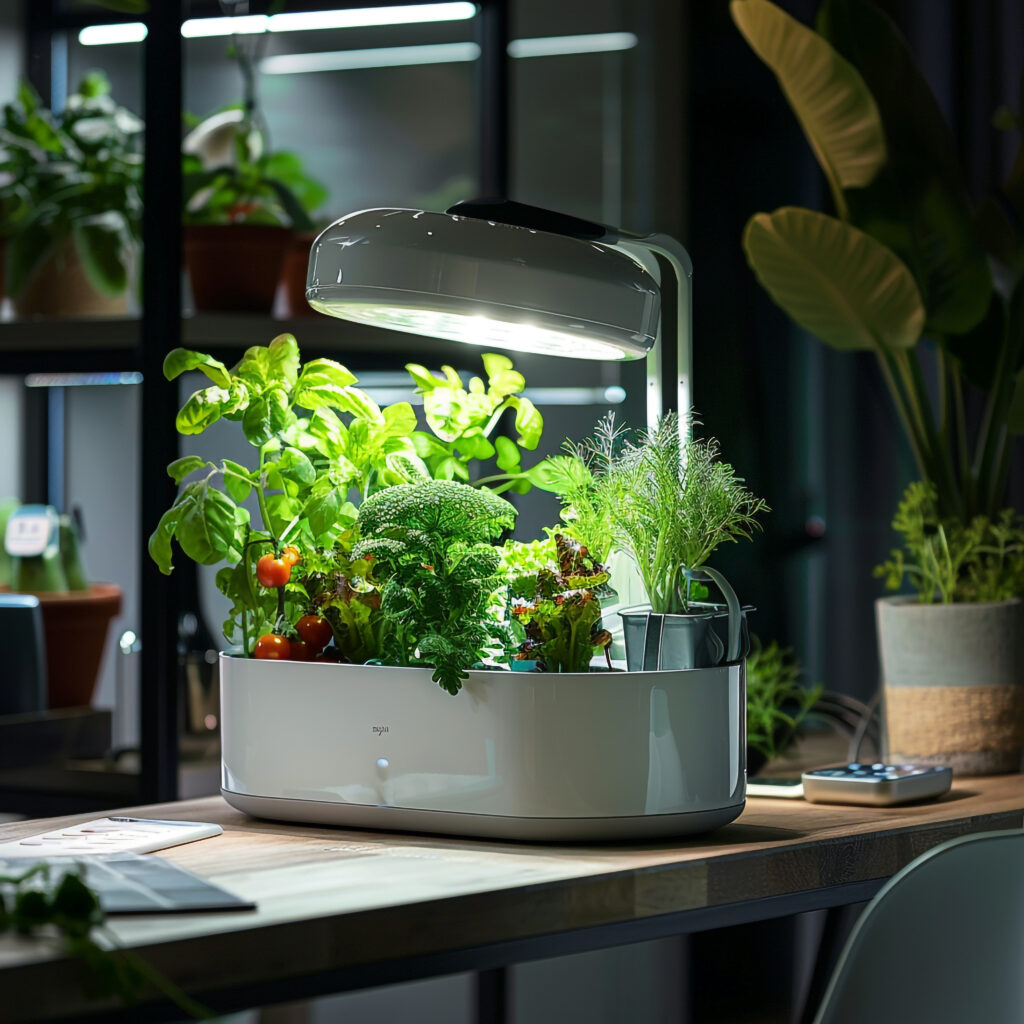
One big reason to choose hydroponics is it saves water. These plants use much less water than those grown in soil. This is good for the planet and helps us use resources wisely. Plus, hydroponics gives plants exactly what they need, so there’s no waste or harm to the environment.
Hydroponics means you can grow plants all year, even in tough climates. Plants grow indoors, away from harsh weather. So, you can have fresh herbs and veggies any time, no matter the weather outside. Learn more about optimizing plant growth across.
Hydroponics also makes the most of small spaces. Hydroponic herb guides show how you can grow plants up, not just out. This means you can produce more food in a tiny area, something you can’t do with traditional gardens.
Without soil, hydroponic gardens don’t get pests or diseases that trouble regular gardens. This means healthier plants and less need for harmful chemicals. It’s a safer way to eat fresh food.
Hydroponic gardening has many benefits. It saves resources, lets you grow food all year, uses space well, and cuts down on pests. Choosing hydroponic gardening makes gardening easier and helps our planet.
Understanding Hydroponic Herbs and Vegetable Systems
Hydroponics is a way to grow plants in water instead of soil. It uses less water and helps plants grow faster. Plants get all they need from the water, which has nutrients and oxygen.
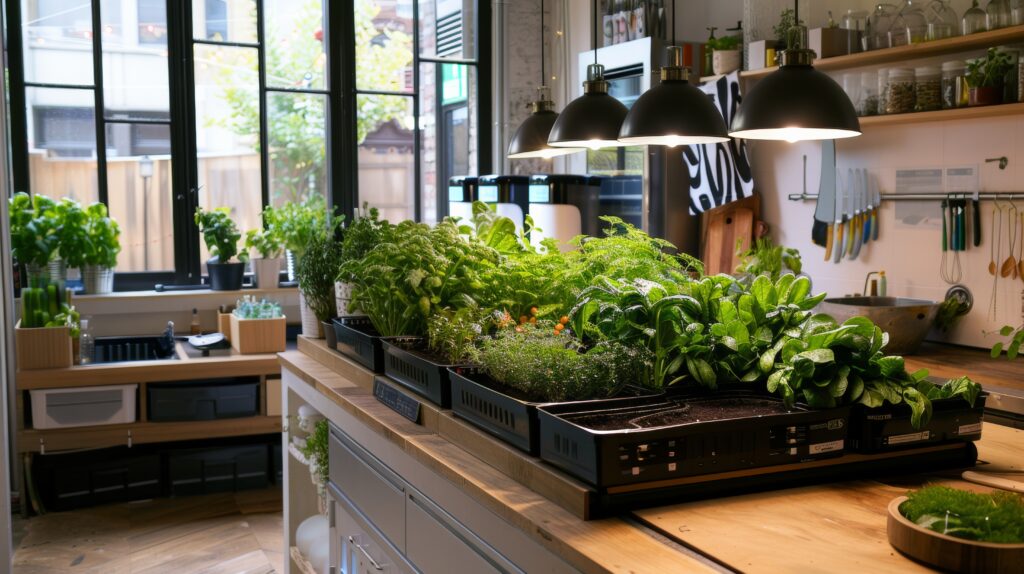
For beginners, starting with herbs like basil, thyme, and parsley is a great idea. These plants are easy to care for and do well in hydroponics. They’re perfect for those new to hydroponic vegetable tips or a hydroponic herb guide. DWC systems are simple and great for small gardens.
Hydroponics uses up to 90% less water than traditional farming. It recycles water and controls nutrients and pH levels precisely. This makes it very sustainable and helps with food security.
To set up hydroponics, you need tanks, pumps, and lights. You also need to adjust the nutrient levels and pH. For more advanced setups, there are techniques like NFT and Ebb & Flow. These methods help plants grow by controlling their root environment.
Hydroponics has many benefits. Plants grow faster, produce more, and can be grown all year. It’s perfect for growing food in any season, no matter the space or climate.
Choosing the Right Hydroponic System for Your Indoor Garden
Starting with indoor hydroponic gardening means picking the right system is key. You want to grow healthy vegetables and herbs all year. Systems like Deep Water Culture (DWC), Nutrient Film Technique (NFT), and Ebb & Flow have different benefits. They fit various spaces, from small kitchens to large living areas.
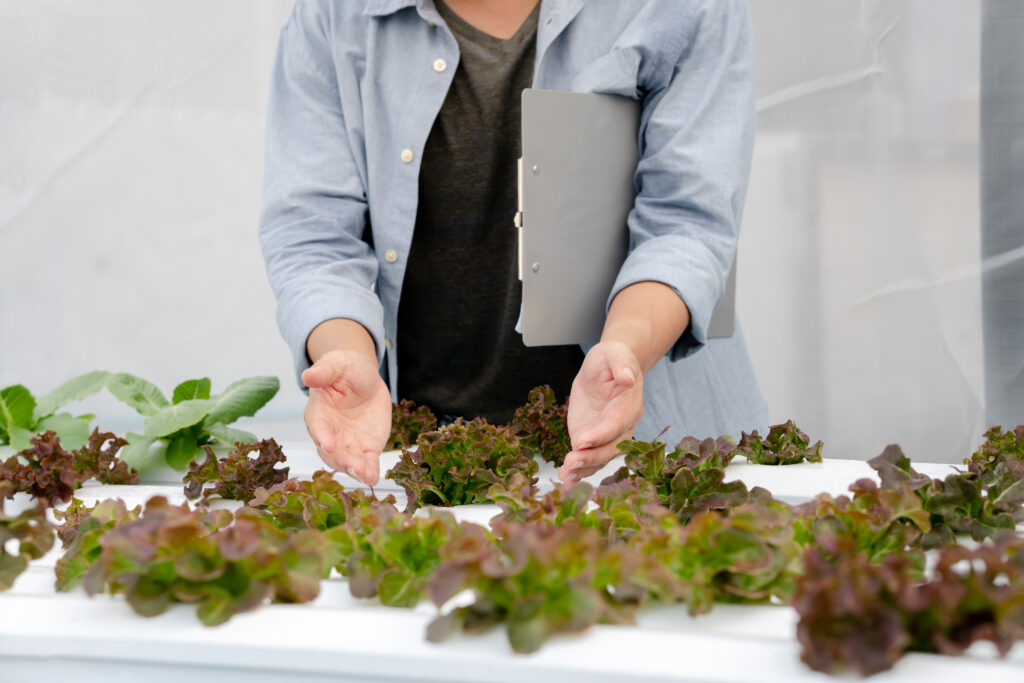
New tech has brought smart hydroponic systems. These make gardening easy and make your space look good. They give you tips and codes for your plants. Plus, you can use many seeds, not just those from one supplier.
When looking at hydroponic vegetable gardening, think about the long-term benefits. Some systems, like Aeroponic or Nutrient Film Technique, cost more but grow plants faster and use less water. This is good for the planet and makes gardening sustainable.
The best hydroponic system works for both new and experienced gardeners. It should be scalable and use resources well. It should also have a strong community, like Farmative by Fork Farms, for support and learning. With flexibility, tech, and community support, your indoor hydroponic garden will thrive.
Preparing Your Hydroponic Garden: Equipment and Setup
Starting your journey in growing herbs hydroponically requires the right setup and equipment. It might seem complex at first, but with a clear list of what you need and some basic knowledge, it’s easier than you think.
First, you need a container that won’t let algae grow. A simple tote works well. You can use spray paint to make it opaque, keeping it healthy for your plants. It’s also important to mark where the water level should be to help with upkeep.
For your hydroponic growing setup, air and water circulation is key. You’ll need an air pump and airstones to keep the water full of oxygen. This is crucial because tap water isn’t ideal for your herbs, which prefer a pH of 6.0-6.5.
To keep the pH right, you’ll need a pH testing kit and supplies to adjust it. The right pH is important because it affects how well your herbs absorb nutrients. This is vital for their health and growth.
Quality hydroponic nutrients, like General Hydroponics FloraGro, are also a must. They ensure your herbs get the nutrients they need for healthy growth. You’ll also need net pots and a good growing medium to support the roots and help them take in nutrients.
Putting all these parts together makes setting up your hydroponic garden easier. The initial cost might be about $80, but you’ll save money and enjoy fresh herbs all year. For example, growing basil at home can save you up to $50 a year.
“The beauty of hydroponics is the control you have over the environment, allowing you to produce fresh herbs year-round.”
In conclusion, setting up your hydroponic garden is the first step to a thriving space for herbs and plants. It makes hydroponic gardening rewarding and fruitful.
Hydroponic Herbs and Vegetables Selection and Planting Techniques
Starting a hydroponic garden means choosing the right herbs and vegetables carefully. Begin with easy-to-grow herbs like basil, thyme, parsley, oregano, and cilantro. These are great for growing herbs hydroponically because they adapt well to different hydroponic setups.
Using hydroponic vegetable tips can really boost your garden’s productivity. For example, a drip system is a popular method that delivers water and nutrients directly to the plants. This way, veggies get just the right amount of water without wasting any. It also uses less water than traditional soil gardens.
Planting in hydroponics is different from soil gardening. You put seeds or starter plants into a medium in net pots, then into the hydro system. Make sure to space them out well to prevent overcrowding. This helps with air flow and getting nutrients.
Hydroponics offers many benefits like more produce, less water use, and fewer pests. It’s perfect for small spaces in cities. Plus, it’s eco-friendly, using LED lights that help plants grow well with the right light spectrum.
Starting small and with the right method can make becoming a skilled hydroponic gardener easier. Embrace the journey of growing herbs and vegetables hydroponically, and see your indoor garden flourish, no matter the season or weather.
Mastering the Art of Hydroponic Growing: Lighting and Nutrients
Starting with hydroponic vegetable gardening is both rewarding and complex. It requires understanding lighting and nutrients well. These elements are key to creating the perfect environment for plants to grow. Using LED lights correctly is vital for photosynthesis. Also, getting nutrients right is crucial for your plants.
When picking lighting, think about intensity, spectrum, and timing. New tech helps automate these settings, making sure plants get just the right amount of light. For nutrients, it’s important to mix and feed them regularly. You need to match the nutrients to the vegetables you’re growing, including nitrogen, phosphorus, and potassium.
Hydroponic systems use less water, saving up to 90% compared to traditional gardens. This shows how hydroponics is sustainable and efficient. Keeping an eye on the pH level in the nutrient solution is also key for healthy plants.
If you’re new to hydroponic vegetable gardening, knowing how to spot nutrient problems can help. Our guide on getting your garden ready can be a big help. Remember to change or add nutrients regularly to keep your plants healthy.
Mastering these details leads to a thriving indoor garden. Modern hydroponic systems offer great control and convenience. They help gardeners improve plant growth by focusing on light and nutrition.
Making Hydroponics Smart: Automation and Monitoring
By 2050, the world will have 9.15 billion people. Indoor hydroponic gardening is becoming key to feeding them. These systems now cover 35,000 hectares and are easier to use thanks to automation and smart tech.
Now, you can have a garden that takes care of itself. It has sensors for pH, nutrients, and temperature. This means you don’t have to spend as much time on it.
Real-time monitoring changes everything. Systems now respond super fast to changes in the garden. This is great for those who want to grow herbs and other plants with precision.
These smart hydroponics setups are for everyone, not just experts. They come with features like self-watering and automated lighting. This helps plants grow strong without needing constant attention from you.
There are many resources available for gardeners. Websites like GardeningWay offer guides on soil health and plant growth. You can learn how to manage your garden better without paying for memberships.
These systems are all about making things easier and more efficient. They help with food security and sustainable farming. They’re the future of growing our own food.
